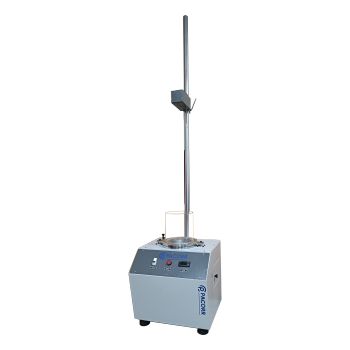
 Dart Impact Testing is a critical method used to evaluate the impact resistance and durability of materials, especially plastics, films, and composites. It simulates real-world scenarios where objects may experience sudden impacts, such as during transportation or use in various applications. But how does Drop Dart Impact Testing work? Let's delve into the science behind this important testing method.
Dart Impact Testing is a critical method used to evaluate the impact resistance and durability of materials, especially plastics, films, and composites. It simulates real-world scenarios where objects may experience sudden impacts, such as during transportation or use in various applications. But how does Drop Dart Impact Testing work? Let's delve into the science behind this important testing method.
At its core, Drop Dart Impact Testing is performed using Drop Dart Impact Tester. It involves dropping a dart-shaped projectile from a specific height onto a test specimen, which is typically a film or a sheet of the material being evaluated. The dart is released from a predetermined height and strikes the specimen with a controlled velocity. The force or energy required to puncture or break the material is then measured, which provides valuable insights into its impact resistance properties.
The key parameters in Dart Impact Testing are the height from which the dart is dropped and the mass of the dart. These parameters are carefully chosen based on the material being tested and the specific testing requirements. The height determines the velocity and the energy with which the dart strikes the specimen, while the mass of the dart affects the force of impact. Higher drop heights and heavier darts result in higher impact energies, which can reveal the material's ability to withstand more severe impacts.
During the dart impact test, the dart deforms the material, causing it to stretch and ultimately fail. The material's response to this deformation is influenced by its mechanical properties, including its tensile strength, elasticity, toughness, and brittleness. The force or energy required to puncture or break the material is measured using load cells, strain gauges, or other sensors, which provide data that can be analyzed to assess the material's performance.
Dart Impact Testing is governed by international standards, such as ASTM D1709 (for films) and ISO 7765 (for plastics), which provide guidelines for test procedures, equipment specifications, and result interpretation. These standards ensure consistency and repeatability of test results across different laboratories and enable meaningful comparisons between different materials.
The science behind Drop Dart Impact Testing goes beyond simply measuring the force or energy required to puncture a material. It also involves understanding the material's failure mechanisms and how they relate to its performance in real-world applications. For example, a material that exhibits high puncture energy may be more suitable for packaging applications where it needs to withstand rough handling during transportation. On the other hand, a material with low puncture energy may be more appropriate for applications where it needs to absorb impact energy to prevent damage to the object being protected.
In conclusion, the Falling Dart Impact Tester is a valuable tool for assessing the impact resistance and durability of materials. It involves dropping a dart-shaped projectile from a specific height onto a test specimen and measuring the force or energy required to puncture or break the material. The results provide insights into the material's performance under impact loads and help manufacturers design more durable products, optimize material formulations, and ensure compliance with industry standards. Understanding the science behind Dart Impact Testing is essential for utilizing this testing method effectively and obtaining reliable results for material evaluation and product development. To buy a high-quality falling dart impact tester, contact Pacorr testing instruments.
Thanks to Pacorr Testing instruments, we have all the required quality testing instruments that have helped us to ensure the best quality delivered to our clients.

Danish
Fair Exports Pvt. Ltd.

